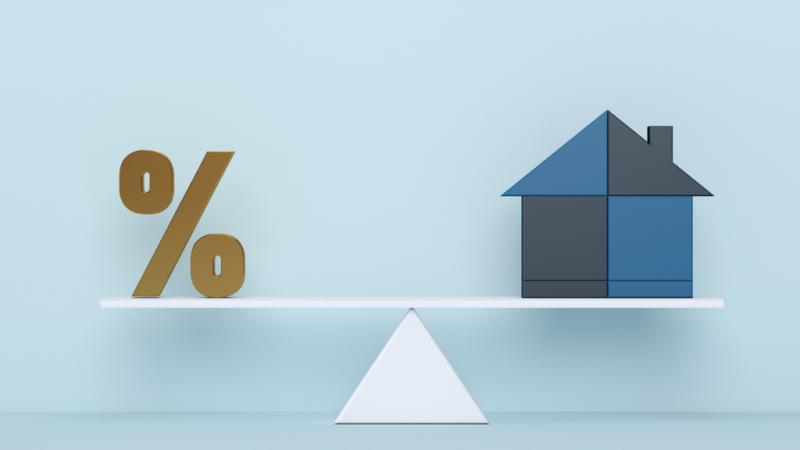How Does Mortgage Refinancing Work in Canada?

With interest rates at an all-time low, now is a great time to refinance your mortgage. When you refinance, you take out a new mortgage with a new lender at a lower interest rate than your current one. This allows you to save money by paying off your mortgage faster and get cashback from the transaction in the form of any difference between your old and new interest rates. But there are many different lenders, and it can be hard to know which company will give you the best deal for your needs. There are some special considerations you should give to mortgage refinancing in Canada.
The Basics of Mortgage Refinancing
The purpose of refinancing is to reduce the interest rate on your mortgage. Your new mortgage will replace the old one, and you'll start making payments on it. You can either keep the same amount of money coming out each month or choose to pay off your debt faster and save more in interest payments over time - this depends on which type of loan you want. There are two main types of mortgages:
Fixed-Rate Mortgages: With a fixed-rate mortgage, you know exactly how much money will come out of your bank account each month for a set period (usually five years).
Variable Rate Mortgages: If you have a variable rate mortgage, then your monthly payments will depend on what interest rates are like when the loan starts and when it finishes. Variable-rate mortgages have been increasing after being slightly less popular than fixed-rate mortgages in recent years.
No matter what type of mortgage you have, there are three ways to refinance:
- Extend your term length by 10 or 20 years
- Move to a lower interest rate without changing anything else about your mortgage
- Move to a lower interest rate while making higher monthly payments
How to Find the Right Lender

There are many lenders out there, and it isn't easy to know which one is the right one for your needs.
It's important to do your research before making any decisions. Visit each lender's website and review the information they provide. Pay close attention to the rate of interest and ask yourself a few questions:
- Do you want a fixed or variable rate?
- How long do you want to keep your mortgage?
- What type of payment schedule do you want?
It would help if you also compared rates to get the best deal for your needs. This will give you a clear picture of the best offers from different lenders in Canada. You can then choose based on what suits your budget and lifestyle best.
What Happens During the Consolidation Process?
The consolidation process is a little more complicated than refinancing. If you want to consolidate your debt, you will need to contact all of the lenders to whom you owe money and negotiate with them to lower the interest rates on your loans. You can also switch from variable interest rates to fixed ones, which many people prefer because they know what they are paying each month, and it is not changing.
When consolidating your debt, you need to be very careful not to borrow too much money. This is especially important if you have bad credit or are self-employed. When consolidating debts, make sure that you do not borrow more than 35% of the value of your assets (including equity in your home). Otherwise, this could negatively affect your credit rating and lead to problems down the line.
Understanding Your New Interest Rate
One of the most important things to consider when refinancing your mortgage is your new interest rate. Your lender will provide you with an estimated interest rate for the first five years of your refinance, as well as a lifetime estimate. This means you'll know what you can expect to pay in interest throughout your loan. But it's not always easy to tell which lender will give you the best deal on your new interest rate.
One way to compare the different lenders is by looking at the difference between their advertised and actual rates. If a company announces a lower rate than their competitors, they may have a higher APR (annual percentage rate) on their existing product. You may also be able to save money by choosing a lender with a lower administrative fee or one that doesn't charge any prepayment penalties if you make extra repayments on your mortgage.
Reducing Your Monthly Payments
One of the best reasons to refinance your mortgage is to reduce your monthly payments. You can lower your rates and get a smaller amount every month by refinancing. This will help you save money in the long run by paying off your mortgage sooner. For example, if you have a $200,000 mortgage with a 4% interest rate and you plan to pay it off in 25 years, you'll end up paying $1,000 per month. However, if you refinance the same amount and get a 2% interest rate for the same term, then you'll only be paying about $500 per month! That's half as much as before!
When it comes time to refinance your mortgage this year, make sure that monthly payment is one of your top considerations. It makes sense to look into different lenders and rates so that you can find the best deal for yourself and save money in the long run.
Now that you know what you're in for, are you ready to refinance?
We hope this guide has given you all the information and resources you need to make the right decision for your specific situation. Whether you're planning on it or not, it's important to have all the information available so that you can make an informed decision and get the best deal possible.
Previous Posts:
Next Posts: